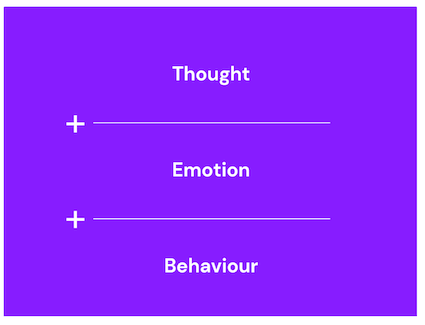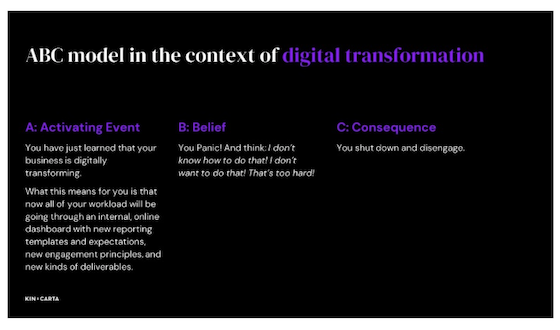Rapid Transformation in the Face of COVID-19
Thriving in the new COVID-19 world requires five key ingredients, which can be leveraged with a transformative approach to digital adoption in the pharma space.
The digital age has been emerging at speed for the past decade, and it is changing how we work. To date, this has been particularly challenging for large pharma organizations across roles, markets, and working within strict regulatory constraints. And yet, in the face of COVID-19 many pharma and health businesses have leapt into action. Guidelines that were once impossible barriers are now stripped back, as governments look to fast-track diagnostic, prevention, and treatment solutions.
We are all under duress from COVID’s force majeure, but also from digital challenges. A fundamental digital shift has occurred and our “normal” has been altered forevermore. Perhaps our new working from home experience will create a lasting shift in our perspective on what digital can truly offer and turn our heads to the future of how we can optimize our organization within the existing regulatory and lifecycle frameworks. Certainly, a deeper understanding of cultural change to most effectively engage employees going forward is critical if we are to make the most of all that it has to offer.
Core survival strengths are collaboration, empathy, and agility. Now, more than ever, today is the time to give pharma teams reasons to keep motivated, and look to the future, leveraging the digital tools we have at our fingertips.
Digital as an enabler, not an end in itself
Businesses in the pharma space have been readily ramping up digitization efforts for some time, but many employees have not been effectively engaged through the process. Specific hurdles around this appear, for example, across global brand teams cascading new digital initiatives to local markets. Nuances are not just linguistic, but adoption varies country to country, with differing levels of engagement in digital innovations.
This isn’t just a pharma issue – this is also part of a wider health ecosystem challenge, whereby HCPs, hospitals and clinics in different markets have varied infrastructure to engage with new digital initiatives. Added to this, cultural nuances mean that a global digital initiative needs more than the one-page strategy and English version of the tool for it to take flight. Key considerations around cultural barriers and drivers to uptake must be considered. What are the norms that could block the adoption of new initiatives? It is important to explore and prepare for these prior to solution roll out.
We can take some real lessons from our current situations. Thriving in the new COVID-19 world requires five key ingredients, all of which can be leveraged when we look at a transformative approach to digital adoption for employees more broadly in the pharma space:
1. Collaboration and empathy across the company’s leadership, people and teams.
2. Forward-looking evaluation of risks to the strategic horizon, without disrupting business-as-usual.
3. Collaborative assessment of a company’s existing digital agility to respond to those risks.
4. Identification (in four weeks, not four months) of stop/ start/ continues required to improve agility.
5. Embarking on a journey to build non-judgmental awareness of how we each think, feel and act.
How we think, feel and act: the cognitive behavioral element of digital agility
Cognitive behavioral approaches focus on the here and now. As such, there is much to be gain as we digitally transform from what we already know about human responses to change. In Cognitive Behavioral science, the word “cognitive” refers to how we think and feel; “behavior” refers to how we act. These are intertwined.

In the world of psychology, cognitive behavioral therapy is directed at addressing the thinking distortions and habits that we as humans typically experience, and which impact our emotions and behavior. In the world of organizational and digital change, there are a set of thinking patterns and habits that team members will experience – and which will impact personal engagement with the change.
Which beliefs and emotions are impacting our behaviours right now, as we consider how to react to the news of increasing digital demands that will change the fundamentals of how we work? Which healthy thinking patterns can we identify? Which thinking patterns can we identify that are less healthy, and lead to feeling dis-engaged?
The ABC model (Ellis, 1957) gives us one way to unpick barriers to change. It enables us to systematically analyse why we are doing what we are doing and offers us a means to then reassess the consequences of this. Using the ABC model as a first step in the process to managing change more effectively, is a targeted way to align across an organization and better understand the needs of your workforce.

Considering the example above, working backwards through the ABC model, we need to re-articulate the desired Consequence and unpack the Belief leading this, in order to drive change. It could be that the desired Consequence is engagement and excitement about trying something new. To achieve this, we would need to change the “Belief” component – to be one of a growth mindset. That is, instead of panic, there is at least cautious willingness to engage and explore provided the systems in place have the right level of support.
The call to action
Today may not be the time to embark on grand plans around organization-wide digital transformation. That said, quick wins and smaller shifts, leveraging all that digital and tech have to offer, will stand businesses in good stead to weather the storm of COVID-19. This will also help ready our workforces for larger transformations in the months ahead.
Knowing what we know about concerns, beliefs, and behaviours, the call to action for now is clear: give your teams reasons to keep motivated, engaged, and look to the future:
• Celebrate the opportunities we have today, but would not have had in 2005 (the year of the iPhone).
• Make business-as-usual less painful. Take step back and examine your use of existing digital tools, and fix the pain points your teams will have been raising for months.
• Look ahead. Identify two or three strategic areas that will move the needle for your business, and give direction and space for your teams to plan out the related future opportunities (digital and non-digital).
Dr. Pamela Walker is Global Head of Health, and Jonan Boto is a Director for Kin + Carta Advise.
Is Artificial Intelligence a ‘Product’? Products Liability Implications for AI-Based Products
April 10th 2025As the physical products we use evolve to become increasingly complex, traditional products liability frameworks may not always fit to provide remedies for harm that can result from using novel product types.